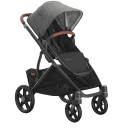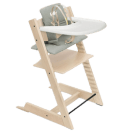
Welcoming a new baby brings a whirlwind of joy and a steep learning curve—especially regarding feeding. Whether you’re a first-time parent or brushing up your skills, knowing how to safely prepare and store infant formula is important for your baby’s health and your peace of mind. This guide will help you master the basics of formula preparation, from the precise mixing of powders or liquids to the proper storage techniques that keep every bottle safe and nutritious. Let’s make sure every feeding supports your little one’s happy, healthy development with step-by-step tips and some handy dos and don’ts. Ready to become a formula-prepping pro? (You’ve got this!)
Preparing Infant Formula
When it comes to feeding your baby, ensuring everything is clean and sterile isn’t just a good practice—it’s essential. The immune systems of infants are still developing, which makes them more vulnerable to bacteria and infection. Here’s how you can protect your little one:
- Wash Your Hands: Before you begin preparing formula, always wash your hands thoroughly with soap and water. This simple step is one of the best ways to prevent the spread of yucky germs.
- Keep It Clean: After each use, clean bottles, nipples, and other feeding items in hot, soapy water. Use a clean bottle brush (dedicated to this purpose only!) to scrub the inside of bottles and nipples to remove all milk residue. Rinse thoroughly with clean water and allow to air dry on a clean, unused towel or a drying rack.
- Sterilize Feeding Equipment: Sterilizing isn’t as complicated as it sounds—we promise. Sterilize all feeding supplies (bottles, nipples, and rings) before their first use. Continue to sterilize feeding items daily until your baby is three months old and they’re less susceptible to infections. You can sterilize with boiling water, in the microwave with steam sterilizer bags, or use a bottle sterilizer.
You can use different types of water to prepare infant formula, but it’s vital to check that it’s safe, free from harmful contaminants, and has appropriate fluoride levels. Bottled, distilled, or boiled tap water are generally safe options. If you’re using well water or need clarification on the safety of your tap water, consider using distilled water or check with your local health department for guidance.
Following these safety and hygiene steps ensures your baby’s formula is as safe and nourishing as possible. Remember, your pediatrician is an excellent resource for personalized advice if you have doubts or questions about preparing and storing infant formula.
How to Mix Formula
Correctly preparing your baby’s formula is essential to ensure they receive the proper nutrition. Here’s a guide to help you mix each type of infant formula confidently.
How to Mix Powdered Formula
Powdered formula is the most common and often the most economical choice. Here’s how to mix it properly:
- Measure the Water: Start by pouring the right amount of cooled, boiled water needed into the sterilized bottle. Always add water before the formula powder.
- Add the Formula: Measure the correct amount of powder using the scoop provided with the formula. Level off the excess from the scoop using a clean knife or the leveler provided. Only pack the powder if the instructions specify that you should do so.
- Secure the Lid: Place the nipple and ring on the bottle and tighten to prevent leaks. But don’t overtighten! A too-tight nipple ring can create negative pressure and make it too challenging for your baby to suck.
- Shake Well: Shake the bottle vigorously until the powder dissolves completely. A few bubbles are totally normal.
- Check the Temperature: Always test the formula’s temperature before feeding your baby by putting a few drops on the inside of your wrist. It should feel lukewarm, not hot.
How to Dilute Concentrated Liquid Formula
Concentrated liquid formula is less popular than powdered but still used by many families. Here’s how to prepare it:
- Prepare the Water: Pour the required amount of cooled, boiled water into the sterilized bottle.
- Mix in the Concentrate: Shake the can of concentrated liquid before opening. Pour the required amount of concentrate into the bottle with water.
- Combine Thoroughly: Secure the bottle’s nipple and ring, and shake well to ensure the concentrate blends completely with the water.
- Temperature Check: As with powdered formula, test the temperature on your wrist to ensure it’s safe to bottle-feed your baby.
Handling of Ready-to-Feed Formula
Ready-to-feed formula is the most convenient type, requiring no mixing or measuring (it’s ideal for travel, too!):
- Open with Care: Shake the container of ready-to-feed formula before opening it. This helps mix any settled contents.
- Pour Directly into the Bottle: Open the container and pour the required amount into a sterilized bottle. If you don’t use the entire container, cover it and store it in the refrigerator.
- Serve Immediately: Ready-to-feed formula can be given at room temperature or warmed slightly if your baby prefers. Never use a microwave to warm formula—it can create hot spots.
Storing Infant Formula
Correctly storing your baby’s formula is just as important as preparing it properly. Here’s how to keep your infant formula safe and nutritious, whether it’s still sealed, already mixed, or leftover from a feeding.
- Cool, Dry Places Are Best: Find a spot in your home that’s consistently cool and dry for storing unopened formula. Avoid places that get warm or humid, like near the stove or the fridge, or directly under heating vents.
- Keep It Out of the Sun: Sunlight can damage the formula’s quality over time. It is ideal to store it in a pantry or cupboard away from direct light.
- Watch Those Expiration Dates: Always check and respect the expiration dates on the formula’s packaging. Even if it’s unopened, using formula past its expiration date is a no-go because it might not be safe or as nutritious.
What to Do with Prepared Formula
If you batch prepare and fill bottles in advance (which can really help with overnight feedings), make sure to:
- Chill It Quickly: Pop prepared formula in the fridge straight away, keeping it at or below 40°F. Use any prepared formula within 24 hours and keep it in a tightly sealed container at the back of the fridge where it’s coldest.
- Room Temperature Rules: Never let prepared formula sit out at room temperature for over an hour. Bacteria love warm environments and can grow quickly, making the formula unsafe.
What About Formula Bottle Leftovers?
Knowing what to do with your leftover formula is super important for keeping your baby safe:
- When in Doubt, Throw It Out: If your baby starts a bottle but doesn’t finish it within an hour, tossing the rest is safest. The combo of formula and your baby’s saliva can cause bacterial growth.
- Don’t Reuse Partial Bottles: Always start fresh with a new bottle for each feeding. It might seem like a waste to throw out what’s left, but it’s not worth the risk of illness. If your little one often leaves a lot behind, you might consider making smaller amounts more frequently.
These tips will help ensure that every bottle you prepare is safe and healthy for your baby. Remember, when it comes to formula, fresher is always better!
FAQs About Safe Preparation and Storage of Formula
What happens if I over-dilute or concentrate the formula?
Getting the water-to-formula ratio just right is essential. Over-diluting the formula can lead to nutritional deficiencies. On the other hand, concentrating the formula by adding less water than recommended can lead to dehydration, kidney problems, and an excessive intake of vitamins and minerals. Always follow the manufacturer’s instructions precisely to ensure your baby gets the right balance of nutrients.
What are some unsafe storage practices I should avoid?
Avoid storing formula in places prone to large temperature fluctuations, such as near heat sources, in direct sunlight, or the car. Also, once prepared, you should not leave formula at room temperature for more than an hour because it becomes a breeding ground for bacteria. In the fridge, store formula at the back, where the temperature is most stable, and use it within 24 hours. Never store formula in the door—temperature fluctuates too much.
Can I reheat formula if my baby didn’t finish their bottle?
It’s best to avoid reheating formula. Once your baby has started feeding from a bottle, their saliva mixes with the formula and can introduce bacteria. If not consumed within one hour, it’s safest to toss the leftover formula to prevent any risk of bacterial contamination.
Can I reuse formula that has been left out?
No, you should never reuse formula that has been left out. After an hour at room temperature, bacteria can multiply in the formula, making it unsafe for your baby to consume. Always prepare a fresh bottle for each feeding; if any formula is left over after your baby is done, it’s safest to discard it.
How can I ensure the formula is safely stored in the refrigerator?
To safely store formula in the refrigerator, follow these guidelines:
- Use a clean, sterilized container with a tight lid to store the prepared formula.
- Place the container in the back of the refrigerator where the temperature is coldest and most consistent.
- Keep the refrigerator temperature at or below 40°F (4°C).
- Use or discard any refrigerated formula within 24 hours. Do not store it beyond this time—the risk of bacterial growth increases.
What should I do if I accidentally make a bottle with too much water or formula powder?
If you realize that the mix is incorrect—either too diluted or too concentrated—it’s best to discard that batch and start over. Feeding an improperly mixed bottle can lead to nutritional imbalances and health issues for your baby. Always double-check the manufacturer’s instructions while preparing a bottle to ensure accuracy.
Finding What’s Right for You
Albee Baby is the oldest family-owned specialty baby shop in the US. We pride ourselves on providing our customers with the best assortment of baby products anywhere, at fair prices, always. We’re committed to being an inclusive resource for parents and hope you feel empowered to find the right baby gear for your family. Still have questions? Feel free to contact our baby gear experts at 877.692.5233 or info@albeebaby.com.
 Car Seat Sale
Car Seat Sale
 Stroller Sale
Stroller Sale
 Home Sale
Home Sale
 Feeding Sale
Feeding Sale
 Activity & Entertainment Sale
Activity & Entertainment Sale
 Bath & Potty Sale
Bath & Potty Sale






 Car Seats
>
Car Seats
>
 Strollers
>
Strollers
>
 Cribs
Cribs
 High Chairs
High Chairs
 Baby Carriers
Baby Carriers
 Travel Cribs & Playards
Travel Cribs & Playards
 Wagons
Wagons
 Home
>
Home
>
 Bath & Potty
>
Bath & Potty
>
 Diaper Bags & Backpacks
Diaper Bags & Backpacks
 Toys
>
Toys
>
 Gifts
>
Gifts
>
 Clothing
>
Clothing
>

















 Infant Car Seats
Infant Car Seats
 Convertible Car Seats
Convertible Car Seats
 All-in-One Car Seats
All-in-One Car Seats
 Booster Car Seats
>
Booster Car Seats
>
 Travel Systems
Travel Systems
 Car Seat Accessories
Car Seat Accessories
 Single Strollers
Single Strollers
 Double Strollers
Double Strollers
 Single-to-Double Strollers
Single-to-Double Strollers
 Lightweight & Compact Strollers
Lightweight & Compact Strollers
 Jogging Strollers
Jogging Strollers
 Bicycle Trailers & Child Seats
Bicycle Trailers & Child Seats
 Stroller Accessories
Stroller Accessories
 Stroller Frames
Stroller Frames



































